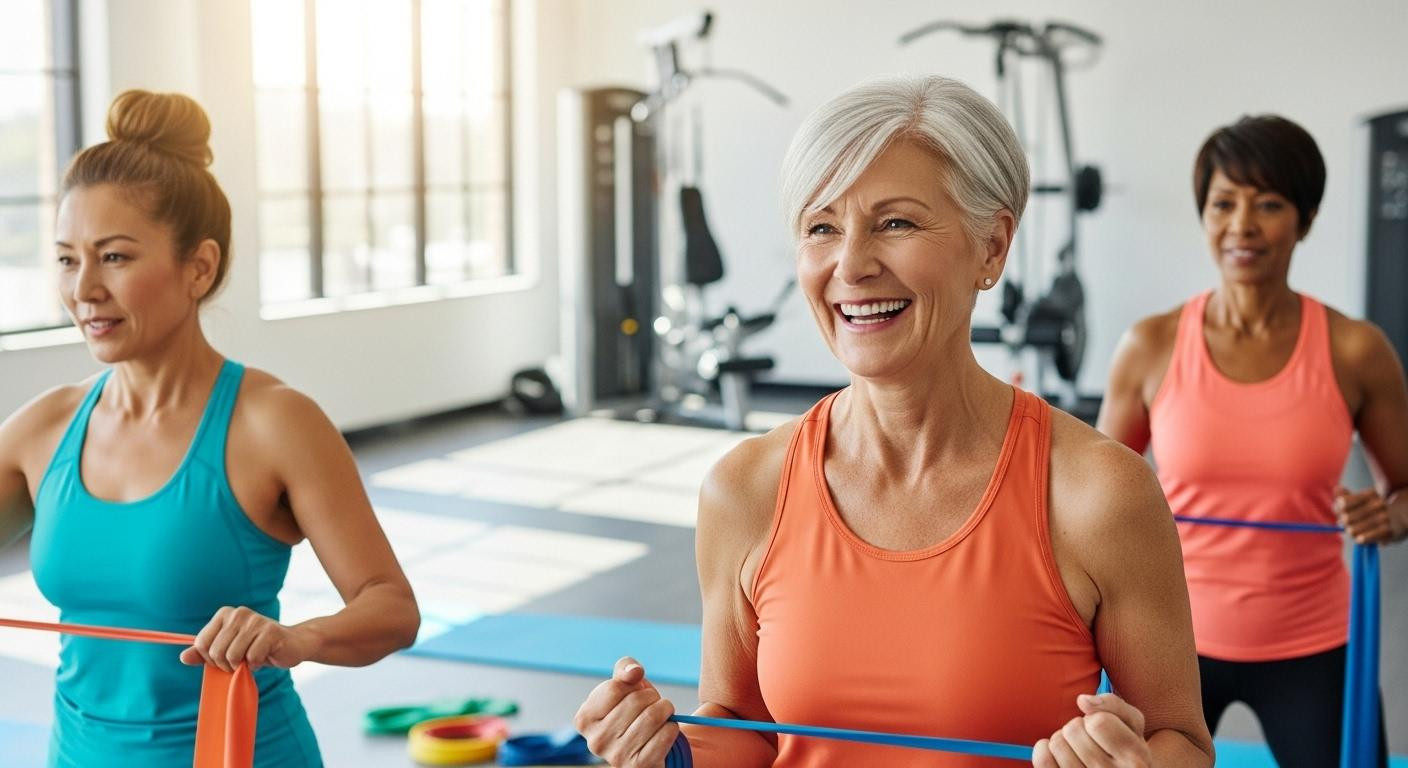At 71, I move through my morning workout with the confidence of someone half my age. While my peers struggle with basic mobility, I deadlift 185 pounds and sprint up three flights of stairs without breathing hard. The secret isn’t genetics or exceptional discipline. It’s five counterintuitive tricks that transformed how I approach exercise as I age.
Most people assume that staying strong past 70 requires backing down from intensity. They’re wrong. Progressive resistance training becomes more critical, not less important, as we age. My body adapts to challenge just like it did decades ago.
The sustainability paradox: why intensity isn’t the enemy
The first trick contradicts everything you’ve heard about senior fitness. Controlled intensity preserves capability while excessive caution accelerates decline. Research from the National Strength and Conditioning Association shows that resistance training at 70-85% of maximum capacity produces remarkable results.
I discovered this at 65 when my doctor warned against “overdoing it.” Six months of cautious light weights left me weaker than when I started. Everything changed when I embraced progressive resistance training following evidence-based protocols.
Studies demonstrate 34% improvement in physical functioning among seniors who maintain challenging routines. The key word is “progressive” – constant adaptation at any age. My body remains surprisingly responsive at 71 when stimulated correctly.
This approach builds bone density while strengthening muscles. Resistance training prevents the cascade of age-related decline that begins with muscle loss and ends with lost independence.
The five tricks that changed everything
Trick #1 – The community multiplier effect
Group fitness classes transformed my adherence through accountability and genuine enjoyment. Research published in 2025 shows 85% adherence rates for community-based senior programs compared to 50-65% for home workouts.
Specialists in geriatric fitness confirm that social engagement reduces depression by 53% among active seniors. I joined a strength training group at 68 and haven’t missed more than two sessions in three years.
The energy is infectious. We celebrate each other’s victories and provide support during setbacks. This social dimension makes sustainable fitness feel natural rather than forced.
Trick #2 – The listening protocol
Learning to distinguish productive discomfort from warning signals took years to master. Proper hydration and body awareness became my non-negotiable foundation for every session.
Gerontologists specializing in healthy aging recommend the modified exertion scale: 5-6 feels “moderately hard” and indicates appropriate intensity. Anything reaching 7+ signals excessive strain for sustainable training.
Recovery optimization requires 25-30% more protein within 45 minutes post-workout compared to younger adults. This knowledge prevents injury while maximizing adaptation.
Trick #3 – The balance trifecta
Integrating strength, balance, and cardiovascular training creates comprehensive fitness architecture. Single-leg stands, tai chi movements, and 150 minutes of weekly cardio form my protective foundation.
Research demonstrates 46% fewer falls among seniors who combine these three elements. Balance exercises serve as insurance – you can’t maintain fitness while sidelined by injury.
I practice single-leg stands daily, progressing from 10 seconds with chair support to 30 seconds eyes-closed. This simple habit has prevented countless stumbles and maintained my confidence in dynamic movement.
What the research reveals about aging fitness
The economic argument nobody mentions
Consistent strength training saves approximately $1,850 annually in healthcare costs according to CDC data. Over my six years of disciplined training, I’ve likely avoided $15,000 in medical expenses.
Medicare analysis shows strength trainers use 29% fewer prescription medications for chronic conditions. My blood pressure medication was reduced by half within 18 months of starting resistance training.
Each additional year of independent living represents $50,000 in economic value through nursing home cost avoidance. Prevention compounds over decades into substantial financial benefits.
The flexibility foundation
Yoga and Pilates preserve mobility as quality-of-life insurance. Range-of-motion maintenance ensures I can reach, bend, and move without limitation during daily activities.
I dedicate 20 minutes daily to stretching routines focused on hip flexibility and spinal mobility. This investment prevents the gradual stiffening that steals independence from so many peers.
Functional movement matters more than gym performance. My goal is carrying groceries, playing with grandchildren, and traveling without physical barriers.
Why this works when quick fixes fail
My decade-plus consistency contrasts sharply with typical boom-bust fitness cycles. These five tricks function as habit architectures designed for infinite sustainability rather than short-term dramatic results.
At 71, I represent proof of concept – this approach doesn’t just work, it compounds. Research confirms that 75-year-old beginners achieve 30% strength increases within six months when following progressive protocols.
Exceptional outcomes at advanced ages come from sustainable systems, not heroic effort. The habits I built at 65 now feel as natural as brushing teeth.
Your Questions About Sustainable Senior Fitness Answered
Can you really build strength after 70, or just maintain what you have?
Progressive resistance training research shows genuine muscle growth remains possible well into the eighth decade. Adults 70+ achieve 22-35% strength gains within 12 months when following evidence-based protocols. The key is consistent progressive overload with proper recovery.
How do balance exercises prevent falls better than strength training alone?
Balance training improves proprioception – your body’s spatial awareness system. While strength provides power, balance exercises enhance stability reflexes and reaction time. The combination creates redundant safety systems that catch you before falls occur.
What’s the minimum effective dose for someone starting senior fitness at 65+?
Begin with two 25-minute sessions weekly focusing on major muscle groups. Start at 30-40% intensity using bodyweight or light resistance. Programs like SilverSneakers show 78% retention rates at 12 months with this graduated approach.
Morning sunlight streams through my home gym windows as I complete my final set of squats. Six years ago, standing from a chair required effort. Today, I move with capability that inspires rather than limits, proving that age adds wisdom without subtracting strength.

